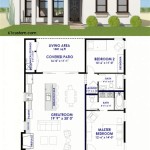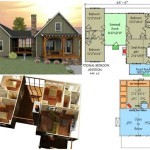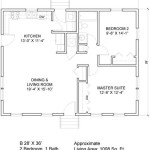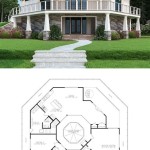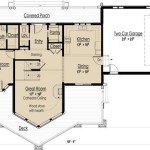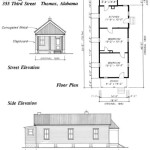Free Bat House Plans: Build A Home For Beneficial Creatures
Bat houses, artificial roosts designed to mimic the natural habitats of bats, can provide crucial shelter for these often-misunderstood creatures. The declining populations of various bat species, largely due to habitat loss, disease, and human disturbance, highlight the importance of conservation efforts. Installing a bat house is a tangible way to contribute to bat conservation and simultaneously benefit from the ecosystem services these animals provide.
Bats are vital components of healthy ecosystems. Many species are insectivores, consuming vast quantities of insects, including agricultural pests and mosquitoes. This natural pest control significantly reduces the need for chemical pesticides, benefiting both the environment and human health. Certain bat species also play a crucial role in pollination and seed dispersal, contributing to the regeneration of forests and the productivity of agricultural lands.
Constructing a bat house is a relatively simple project that can be undertaken by individuals with basic carpentry skills. Numerous free bat house plans are available online, catering to various skill levels and specific bat species. Careful consideration of design features, placement, and maintenance is essential to ensure the bat house is successful in attracting and housing bats.
Selecting the Right Bat House Plan
The first step in building a bat house is selecting an appropriate plan. Several factors should be considered when choosing a design, including the local bat species, the available space for installation, and the desired level of complexity. Online resources, such as those provided by bat conservation organizations, offer a variety of free plans tailored to different species and climates.
Consider the climate when selecting a plan. In cooler climates, larger bat houses with multiple chambers are generally more effective at retaining heat. Warmer climates may benefit from designs with better ventilation. The size and number of chambers are also important considerations. Larger bat houses can accommodate larger colonies, while smaller bat houses may be more suitable for smaller properties or specific bat species.
It is crucial to choose a plan that uses durable, weather-resistant materials. Untreated wood, particularly cedar or redwood, is a popular choice for its natural resistance to rot and insects. Plywood, especially exterior-grade plywood, can also be used, but it should be properly sealed to prevent water damage. Avoid using treated lumber, as the chemicals used in the treatment process can be harmful to bats.
The internal design of the bat house is critical for its success. Bat houses typically consist of a series of vertical chambers separated by roosting partitions. The spacing between these partitions should be appropriate for the target bat species. Rough surfaces are essential to allow bats to grip the roosting surfaces. This can be achieved by scoring the wood with horizontal grooves or using a rough-sawn timber.
Key Construction Considerations
Once a suitable plan has been selected, the construction process can begin. Careful attention to detail is crucial to ensure the bat house is structurally sound and provides a safe and comfortable roosting environment for bats. Accurate measurements and precise cuts are essential for a well-built bat house.
Use high-quality screws instead of nails to assemble the bat house. Screws provide a stronger, more durable connection and are less likely to loosen over time. Ensure that all screws are properly countersunk to prevent any sharp edges that could injure bats. Apply a non-toxic sealant to all seams and joints to prevent water from entering the bat house.
The exterior of the bat house should be painted or stained a dark color to help absorb heat from the sun. Darker colors are particularly beneficial in cooler climates, as they help to maintain a warmer internal temperature. Use a non-toxic, water-based paint or stain to avoid exposing bats to harmful chemicals. Avoid painting the interior of the roosting chambers, as bats prefer the natural texture of the wood.
Proper ventilation is important to prevent the bat house from overheating. Small ventilation slots can be added to the top and bottom of the bat house to allow for airflow. However, these slots should be small enough to prevent rain from entering the roosting chambers. The roof of the bat house should be angled to allow rainwater to runoff quickly and efficiently.
The landing area at the bottom of the bat house is crucial for allowing bats to easily enter and exit. Extend the bottom of the back wall to create a landing pad, typically 12-18 inches in length. This landing pad should be rough and textured to provide a secure grip for bats. Avoid using smooth surfaces, as they can be difficult for bats to navigate.
Optimal Bat House Placement and Maintenance
The location of the bat house plays a significant role in its success. Proper placement can significantly increase the likelihood of attracting bats and ensuring they remain in the bat house. The following factors should be considered when selecting a location.
Bat houses should be mounted in a location that receives at least six to eight hours of direct sunlight per day. This is especially important in cooler climates, as the sun's heat helps to maintain a warm internal temperature. Avoid placing bat houses in shaded areas, as they will be less attractive to bats.
Mount the bat house on a pole or building at least 12 to 20 feet above the ground. This height helps to protect the bats from predators and provides them with ample space to take flight. Avoid mounting bat houses on trees, as trees provide easy access for predators and can impede airflow around the bat house.
Locate the bat house near a water source, such as a pond, stream, or lake. Bats require access to water for drinking and foraging. The presence of a water source can significantly increase the attractiveness of the bat house.
Ensure that the bat house is located away from artificial lights. Light pollution can disrupt the natural behavior of bats and make them less likely to roost in the bat house. If possible, shield any nearby lights to minimize their impact on the bat house.
Regular maintenance is important to ensure the bat house remains in good condition and continues to provide a suitable roosting environment for bats. The exterior of the bat house should be inspected annually for any signs of damage or deterioration. Repair any cracks or holes promptly to prevent water from entering the roosting chambers. Periodically check the bat house for wasp nests or other pests that may compete with bats for space.
Cleaning the bat house is an optional but recommended maintenance task. Bat guano, or droppings, can accumulate over time, potentially creating an unsanitary environment. To clean the bat house, wait until the bats have left for their winter hibernation or migration. This typically occurs in late fall or early winter. Carefully remove the bat house from its mounting and dispose of the guano in a compost pile. Avoid using any chemicals or cleaning agents, as these can be harmful to bats.
Monitoring the bat house is a valuable way to assess its success and gather information about the local bat population. Observe the bat house at dusk to see if any bats are exiting. You can also use a bat detector to listen for bat calls. Keep a record of your observations, including the number of bats exiting the bat house and the dates of first and last emergence. This information can be used to track the success of the bat house and to identify any potential problems.
Building and installing a bat house is a rewarding way to contribute to bat conservation and enjoy the benefits of having these beneficial creatures in your backyard. By following these guidelines and selecting a suitable bat house plan, individuals can provide crucial shelter for bats and help to protect these valuable members of our ecosystem. Remember to consult with local bat conservation organizations for specific recommendations and guidance tailored to your region.

Bat Houses Mass Gov
:max_bytes(150000):strip_icc()/100things2do-f9ca25a5440247b3a11b57a2170c9f77.jpg?strip=all)
6 Free Bat House Plans

How To Build A Bat House Lee Valley Tools

Build A Bat House Popular Woodworking

37 Free Diy Bat House Plans That Will Attract The Natural Pest Control And Save Their Lives
:max_bytes(150000):strip_icc()/woodlogger-c6ff0a74987c407aaec0e2ae26f49974.jpg?strip=all)
6 Free Bat House Plans

37 Free Diy Bat House Plans That Will Attract The Natural Pest Control And Save Their Lives

37 Free Diy Bat House Plans That Will Attract The Natural Pest Control And Save Their Lives

37 Free Diy Bat House Plans That Will Attract The Natural Pest Control And Save Their Lives

Bat House Diy Jenron Designs
Related Posts

